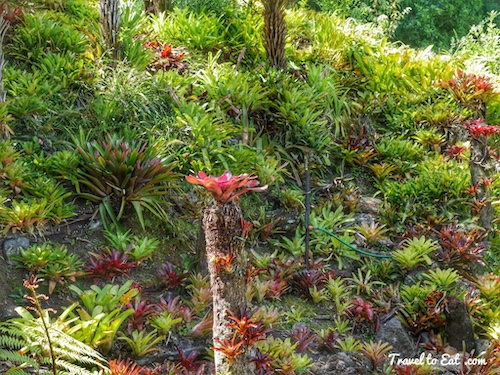
The genus Bromelia, as well as the total family Bromeliaceae, the “pineapple” family, was named in honor of Olaf Bromel, the Swedish botanist. There are about 3,000 species of bromeliads (and more being discovered nearly every week, it seems.) This is one of the most colorful of all the plant families in terms of both foliage and flower varieties. Bromeliads come in an unbelievable variety of colors; some are nearly fluorescent, and many are unique among the plant kingdom. Humans have been using bromeliads for thousands of years. The Incas, Aztecs, Maya and others used them for food, protection, fiber and ceremony, just as they are still used today. European interest began when Spanish conquistadors returned with pineapple, which became so popular as an exotic food that the image of the pineapple was adapted into European art and sculpture. Because many of the individual members are quite rare, I have used the New Zealand Bromiliad Society collection as the base of the pictures and I have added others as I found them mostly in New Zealand.
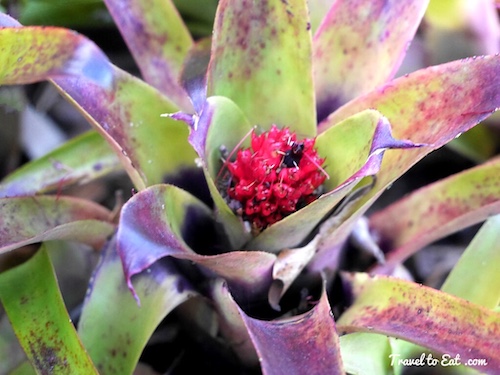
Terrestrial bromeliad species have complex root systems that gather water and nutrients, while epiphytic bromeliads only grow hard, wiry roots to attach themselves to trees and rocks. The tank-type epiphytes, meaning they grow up high on a tree, but feed through the leaves using the tank formed at the center to hold water are common. A wide variety of organisms takes advantage of the pools of water trapped by bromeliads. These species require bright light to grow. Nearly 200 species of Aechmea have broad, bowl-shaped rosettes with arching leaves with solid, spotted, striped or banded leathery, strap-like leaves. Most bromeliads will bloom only once in their lifetime. As they age, they add new leaves from the center. At some point, the bromeliad will no longer be able to produce more leaves due to spacing issues and will begin to die off. Luckily, bromeliads are easy to propagate and can do so both asexually by “pup” production and sexually via seed. These pups are exact clones of the mother plant and typically emerge from the base of the plant.
Aechmea
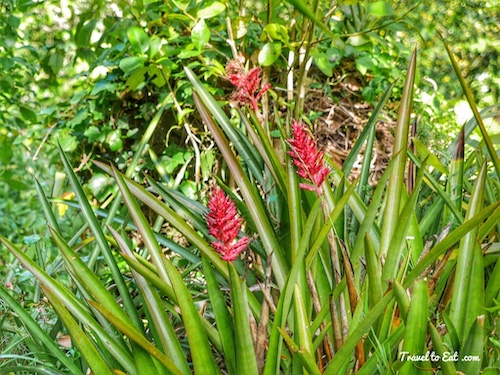
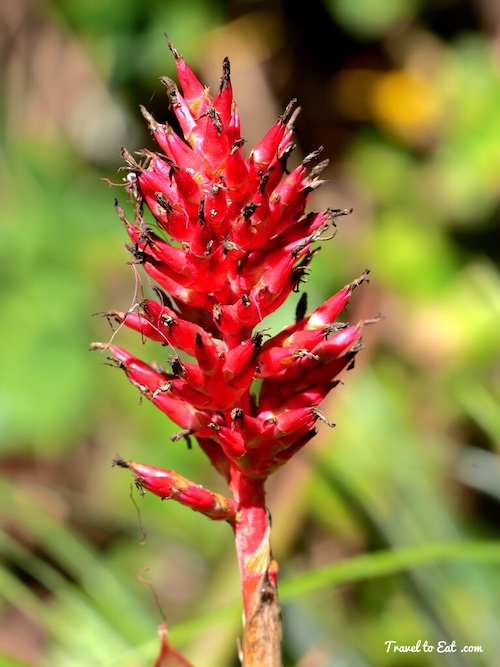
Aechmea distichantha (Brazilian vaseplant, vase plant) is a bromeliad typical of Cerrado vegetation in Brazil, which is also native to northern Argentina, Bolivia, Paraguay, and Uruguay. The Cerrado is a vast tropical savanna ecoregion of Brazil, particularly in the states of Goiás and Minas Gerais. The Cerrado core areas are the plateaus in the center of Brazil. This plant is often used as an ornamental plant. Aechmea distichantha is a funnel-shaped bromeliad with an erect rosette of arching strap-shaped leaves an inch wide and up to 3 ft (0.9 m) long.
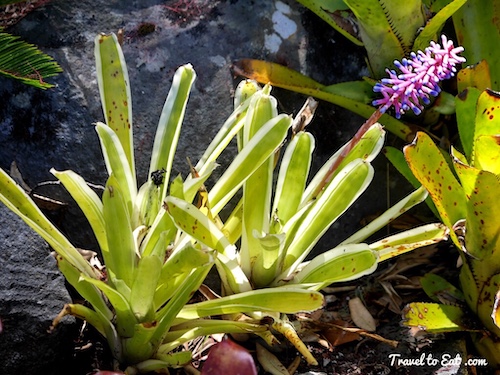
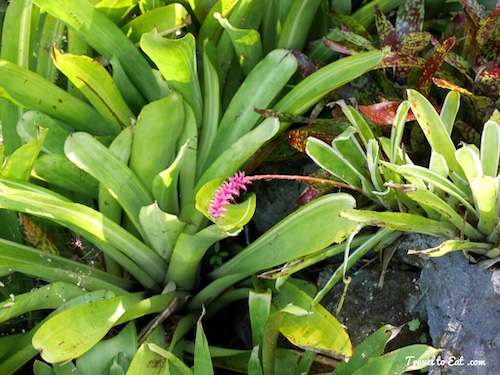
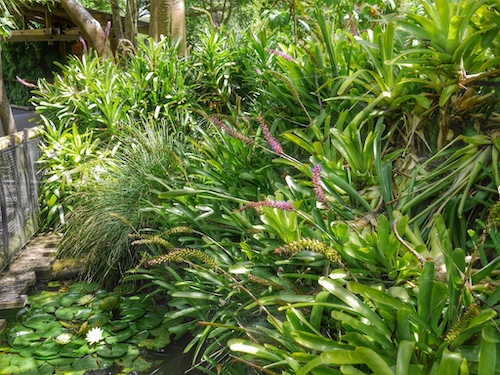
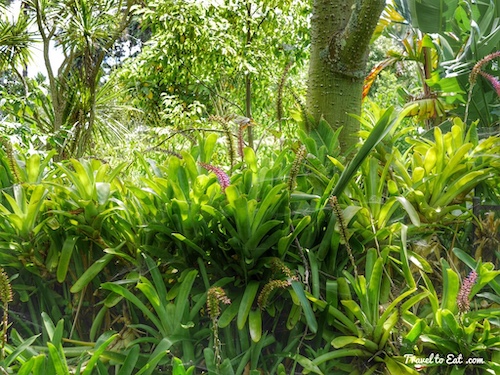
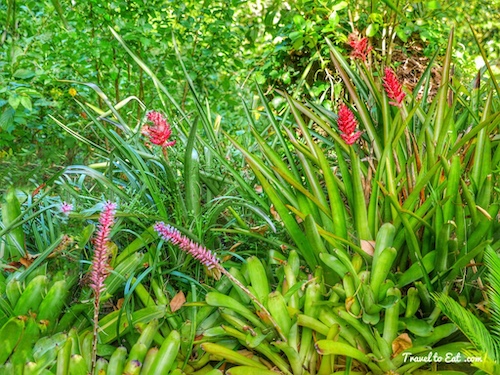
MatchStix (Aechmea gamosepala) are known for beautiful foliage, long lasting color and vivid berry-like fruit. These plants can adapt and grow on a variety of surfaces such as on trees in full sunlight between 300 to 3,500 feet. Match Stick Plant has smooth, 20-inch long, green or varigated leaves. The flat-topped inflorescence has reddish-purple bracts and purple petals and red sepals. The flowers look like pink match-sticks with bright blue heads. A single plant will quickly form a spectacular cluster of multiple rosettes by a liberal production of stolons (or runners) from the ‘mother’ plant. As you can see from the pictures taken at the Auckland Zoo, it is a popular ornamental plant.
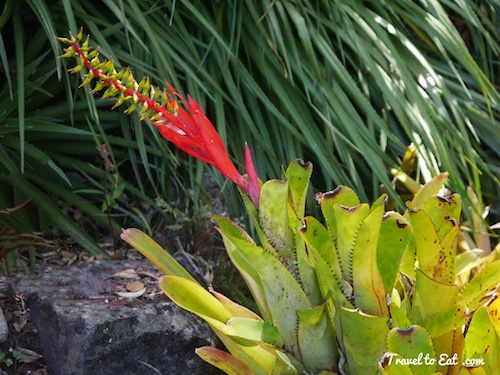
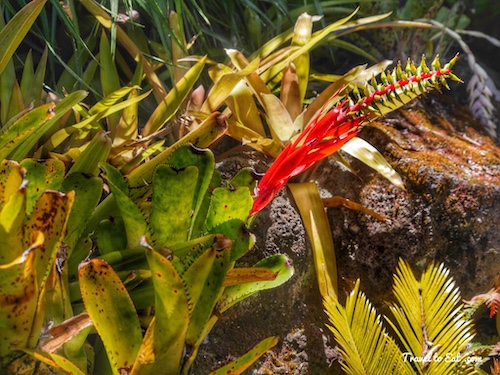
Aechmea nudicaulis is an epiphytic or rock dwelling perennial native to central and northern South America where it grows on trees and rocks. These epiphytes do not take nutrients from the host tree but obtain most of their water and nutrients from the urn created by the rosette of leaves. This is an attractive plant with pale green arching leaves and a spike with large red bracts and greeny yellow flowers during spring and summer. Once the plant has flowered it will produce pups around the base of the plant.
Alcantarea
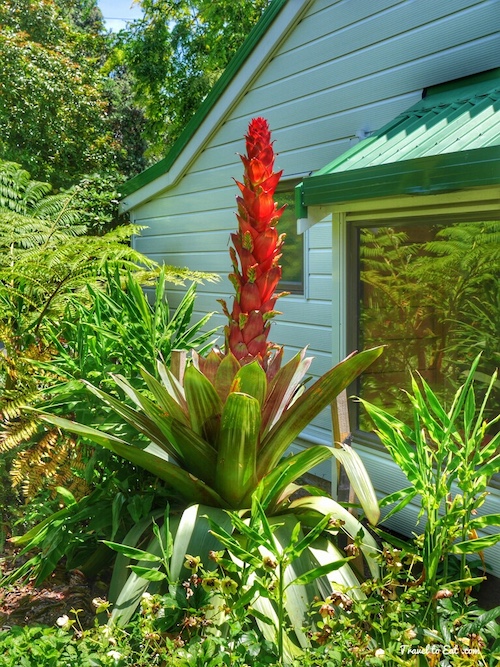
Alcantarea imperialis is a species of giant Bromeliad in the genus Alcantarea. This species is endemic to Brazil, specifically to mountains of Teresópolis near Rio de Janeiro at an elevation of about 1,500 meters (4,900 feet). The genus Alcantarea, with approximately 20 species is an offshoot of the much larger genus Vriesea. As with so many of the bromeliad family, this is a group of plants that has still to be fully determined, with new species being added and still to be added in the near future, as well as reclassification of existing species. For such regal plants, the genus is fittingly named after the 2nd Emperor of Brazil. Alcantarea imperialis is the most regal and is considered the signature species of this genus. This Bromeliad can grow to a span of more than 1.5 meters (5 feet), although it can take up to ten years to get to this size. The thick flower spike can reach up to 3.5 meters (11.5 feet) in height, producing hundreds of slightly fragrant creamy white flowers. The green, slightly ribbed leaves are quite leathery and tough with a distinctive waxy bloom over the surface, giving a bluish coloration from a distance.
Androlepis
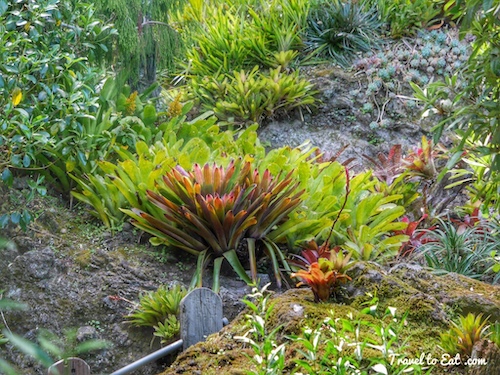
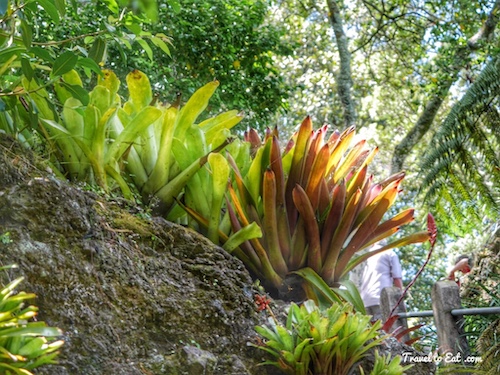
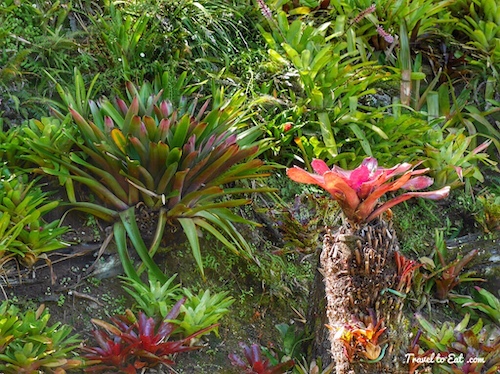
Androlepis is a genus of epiphytes in the botanical family Bromeliaceae, subfamily Bromelioideae, native to Central America and southern Mexico. The genus name is from the Greek “andros” (man) and “lepis” (scale). The Androlepis Skinneri is a species and has a genus all it’s own. It’s beautiful in the landscape or potted. It can attain a wide range of colors including all red if exposed to sun. It’s a staple in the landscaping industry because of it’s beauty, sun and drought tolerance. There is a distinct overlap in the appearance of Hohenbergia castellanosii and Androlepis Skinneri that I am unable to resolve without flowers and or more knowledge. I have assigned them somewhat arbitrarily, I will revisit these issues in the future.
Bilbergia
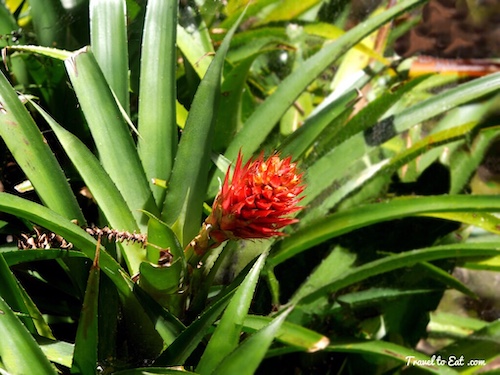
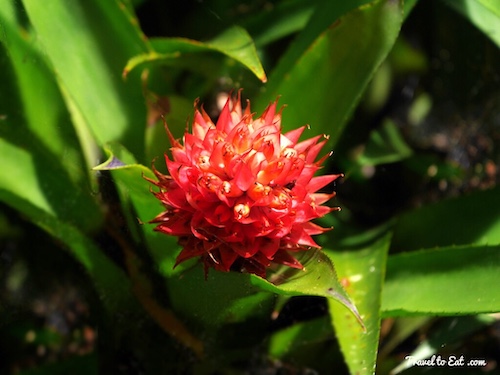
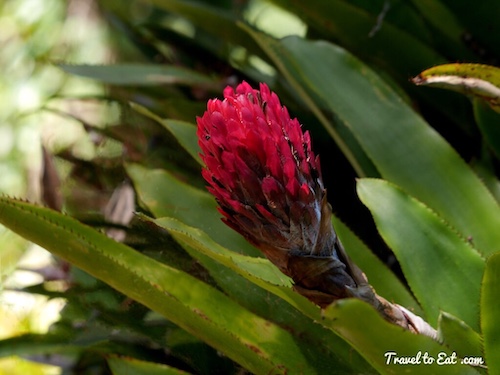
Billbergia pyramidalis is native to Brazil, Venezuela, French Guiana, Lesser Antilles and Cuba; it is also reportedly naturalized in Puerto Rico, the Dominican Republic, and on the Island of Mauritius in the Indian Ocean. Probably the most widely-planted bromeliad in Florida is Billbergia pyramidalis. It has been passed from one person to another for generations and multiplies rapidly in the landscape. The flowers on an individual plant last less than a month, but nearly all the plants will come into bloom at the same time, creating a stunning display during the long hot days of late summer. This Billbergia is equally happy as a terrestrial or epiphyte. When planted in the ground, they quickly create large clumps, and when planted at the base of a tree, will slowly climb the trunk.
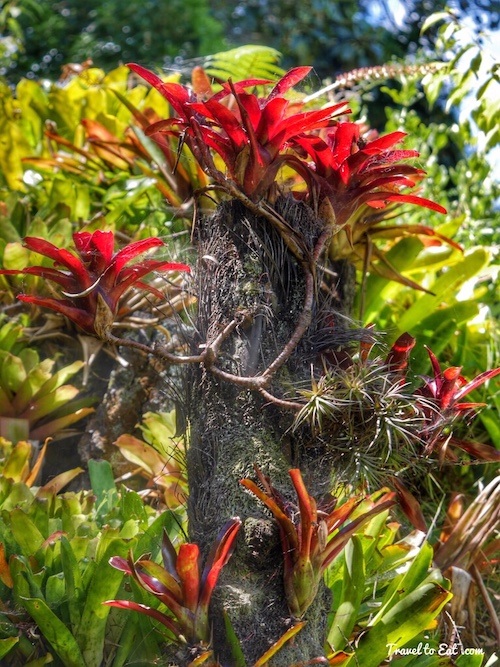
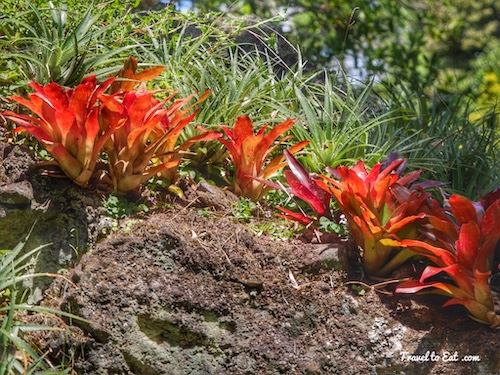
The Billbergia genus, named for the Swedish botanist, zoologist, and anatomist Gustaf Johan Billberg, is divided into two subgenera: Billbergia and Helicodea. They are native to forest and scrub, up to an altitude of 1,700 m (5,577 ft), in southern Mexico, the West Indies, Central America and South America, with many species endemic to Brazil. Billbergia “Karamea Vesuvius” is cardinal-red when grown in good light, hence the name. It is a large billbergia as you can see above. The flowers are green. Bright shade or morning sun.
Guzmania
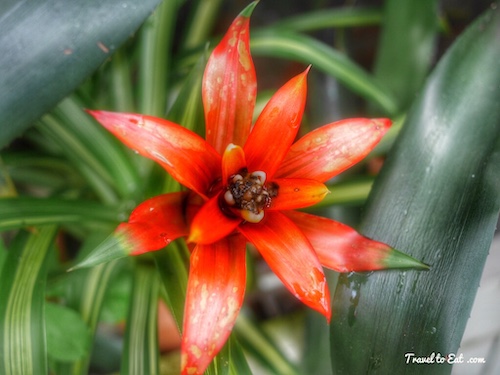
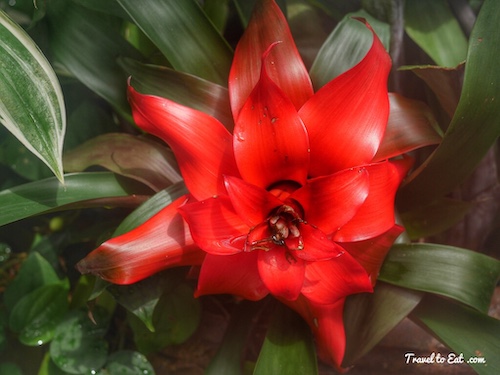
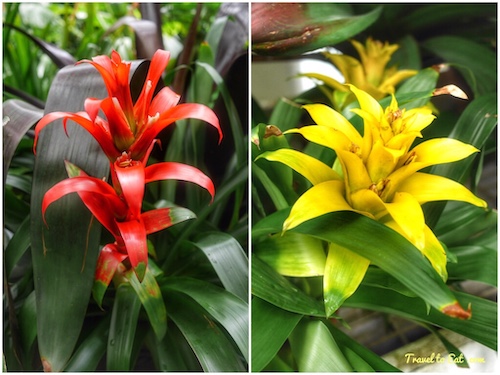
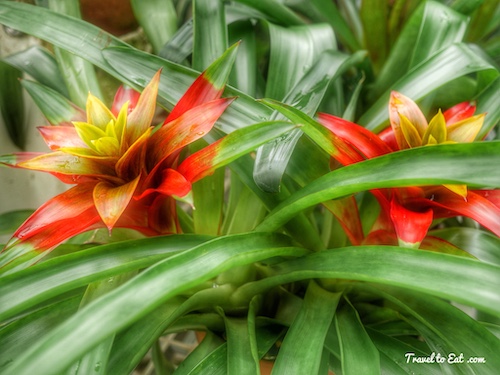
Guzmania (tufted airplant) is a genus of over 120 species of flowering plants in the botanical family Bromeliaceae, subfamily Tillandsioideae. Of all the bromeliads, these may be the most recognizable to the inexperienced bromeliad grower; they are grown in massive numbers for consumption as house plants all over the world. They are mainly stemless, evergreen, epiphytic perennials native to Florida, the West Indies, southern Mexico, Central America, and northern and western South America. The plant dies after it has produced its flowers in summer, but new plants can easily be propagated from the offsets which appear as the parent plant dies. They are epiphytes and can do well if tied on to pieces of bark with roots bound into sphagnum moss.
Hohenbergia
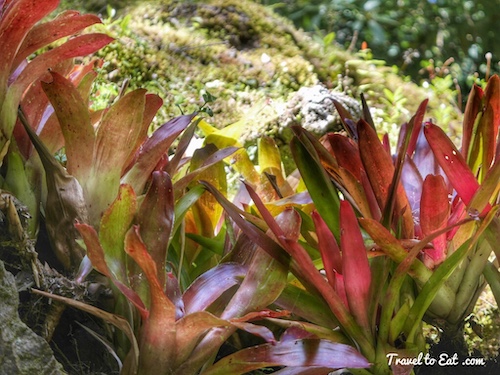
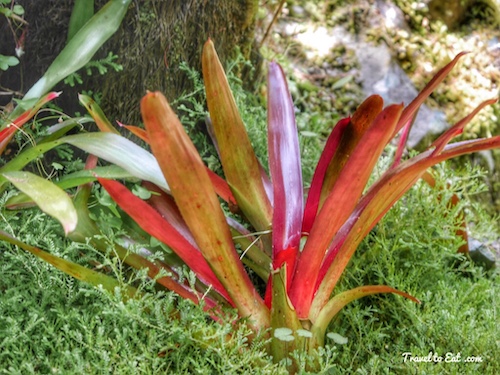
Hohenbergia is native to the West Indies, the Yucatán Peninsula, and northern South America (Colombia, Venezuela, Brazil). The genus name is for the Prince of Württemberg, German patron of botany known as Hohenberg. This genus has two recognized subgenera: the type subgenus and Wittmackiopsis Mez. Hohenbergia Castellanosii has upright lime green foliage with red/pink tips which turn mostly red when ready to bloom. There is a distinct overlap in the appearance of Hohenbergia castellanosii and Androlepis Skinneri that I am unable to resolve without flowers and or more knowledge. I have assigned them somewhat arbitrarily, I will revisit these issues in the future.
Neoregelia
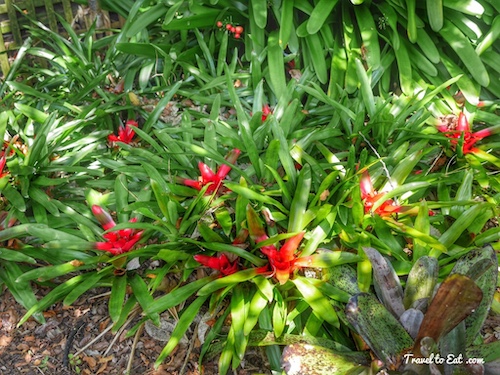
Neoregelia is a genus of flowering plants native to South American rainforests. The genus name is for Eduard August von Regel, Director of St. Petersburg Botanic Gardens in Russia (1815–1892). Sometimes known as the ‘Blushing Hearts’, this genus is a very popular one. They range in size from miniatures to giants, but most are medium-sized rosettes. They prefer bright light to bring out their colours and grow more compact. If given too much shade they lose their color and become more elongated. They are adaptable to both indoor and outdoor growing and are renowned for the beautiful colours in their foliage at flowering time. Water should be kept in the centers or cups at all times.
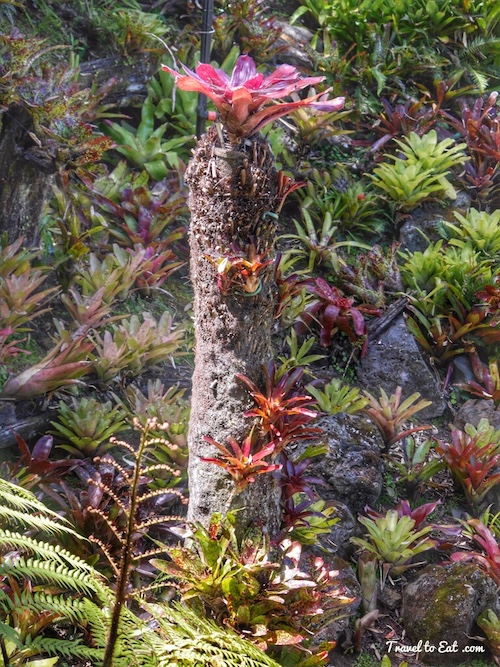
Neoregelia “Fireball” plants are Brazilian bromeliads that produce a massive cluster of plants. Deep red to bronze foliage on a bromeliad that multiplies readily creating a dense beautiful basket of medium-sized cascading plants or in the example above, cascading plants going down the post. Everyone knows what this Neoregelia looks like or believe they do. They also know that it has had a cultivar name for about 40 years even though it is clearly a species and needs a species name. In 1992 a ‘green form’ of Fireball’ was found in Espirito Santo, Brazil and this was sold by Tropiflora, Florida under #4393 as Neoregelia ‘Fireball’ Green.
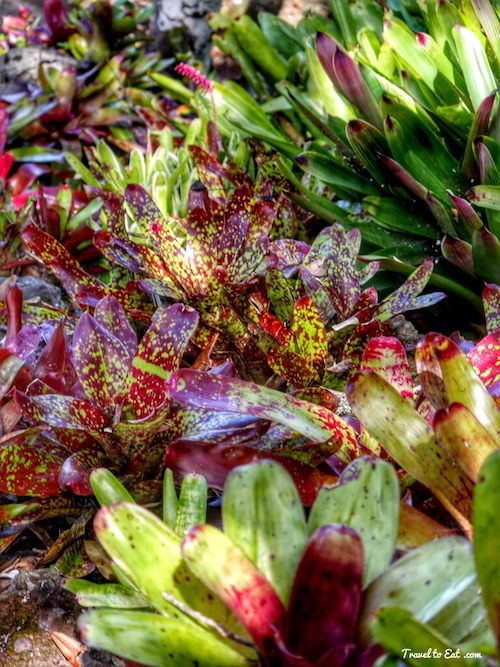
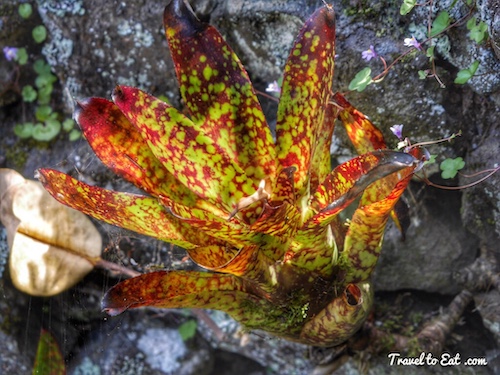
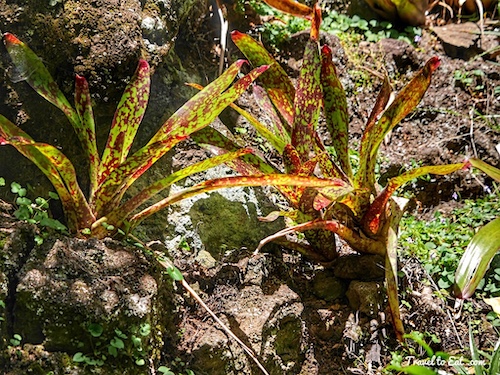
Neoregelia Aztec is a beautiful dark red bromeliad with lime green spotting across the leaves. Will maintain it’s intense colour in well lite situations if not full sun. Will tolerate shaded positions but may become more green if deprived of too much light. Colour is present from when the pups are first removed and intensifies closer to flowering. Produces pups well and adds great colour and texture to any landscape.
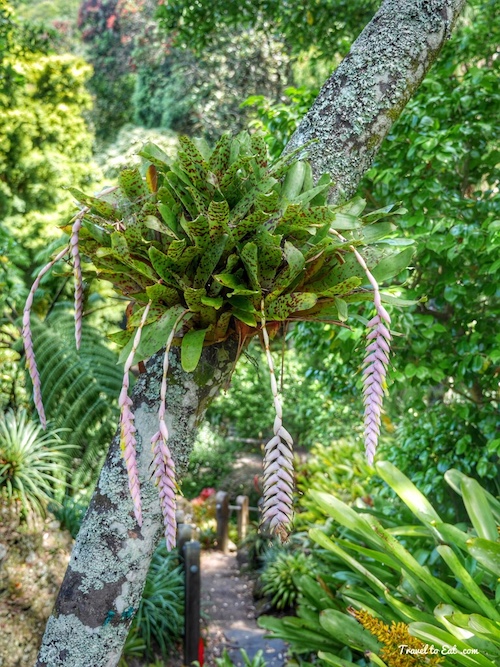
I have two things to say about this magnificent specimen. One I have no idea what it is and two, I have guessed based on the leaves. Neoregelia “Caviar” is a Lisa Vinzant hybrid of smithii x ‘Cheers’ growing to about 5″ across. The most impressive characteristic is the deep purple colored spots on light green leaves. The lower leaves get darker as the plant matures. Very decorative and unique. The pendulous inflorescences are unique and this may very well be a spectacular hybrid created by someone for an upcoming competition.
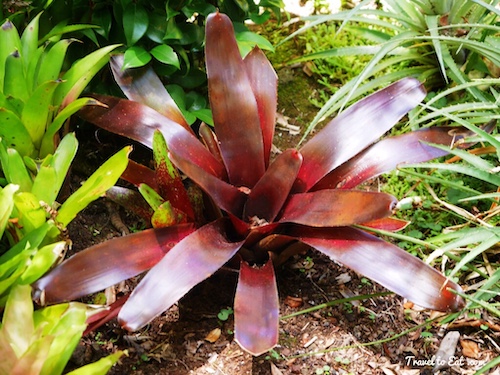
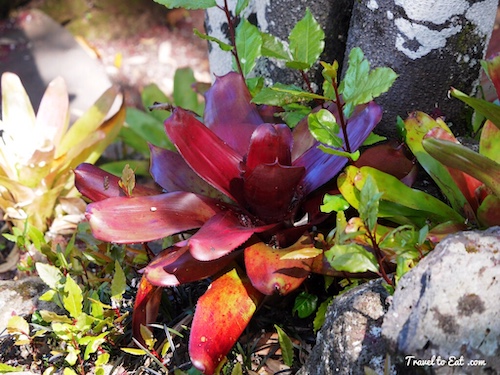
Neoregelia ‘Exotica Velvet’ is a sumptuous hybrid bred for New Zealand conditions by Exotica. Released for the first time at the 2003 Ellerslie Flower Show. There seems to be a fair amount of controversy concerning the name, you can find the discussion in the references.
Nidularium
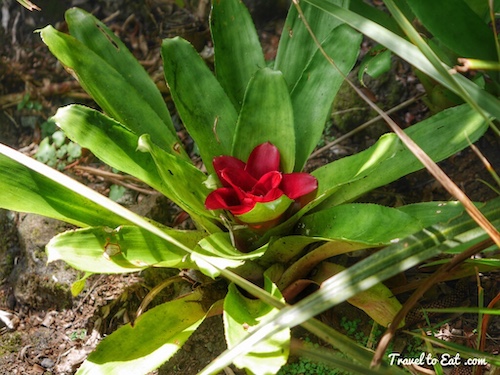
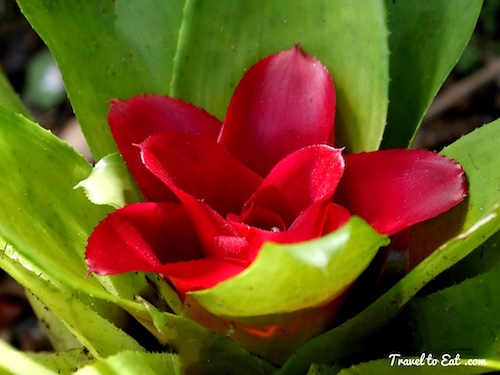
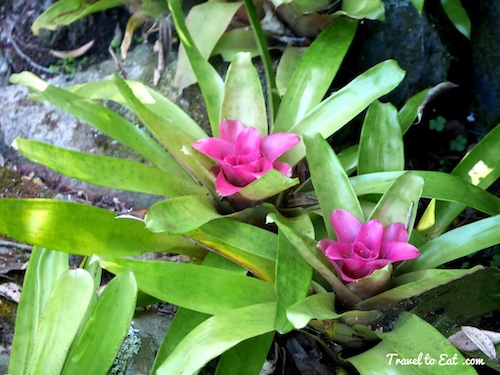
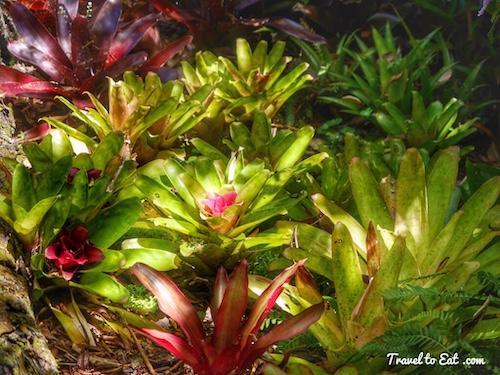
Nidularium is a genus of the botanical family Bromeliaceae, subfamily Bromelioideae. Named to describe the nestling characteristic of the inflorescence (Latin nidulus = little nest), all the species are endemic to Brazil. Commonly confused with Neoregelia which they resemble, this plant group was first described in 1854.
Portea
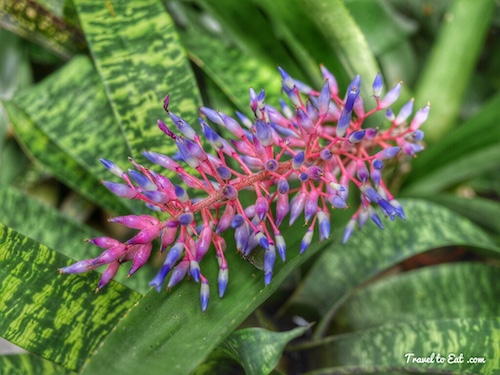
Portea is a small genus from the Atlantic coast of Brazil where they tend to be medium to large plants. According to the Bromeliad Binomial it currently includes just nine species. They thrive in strong light. The foliage of this genus is often quite attractive although heavily protected by sharp spines. The branches of the inflorescence are somewhat lengthy. This characteristic makes the bloom even more stunning. The plant produces a tall bloom of lavender flowers followed by dark purple berries. It is named for Dr. Marius Porte, a 19th-century French naturalist who died in 1866 in Manilla while on a collection expedition for the National Museum of Natural History.
Tillandsia
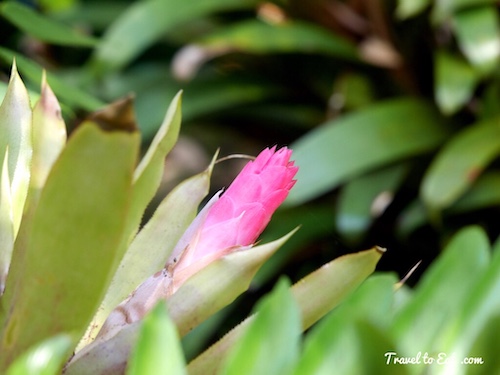
Tillandsia is a genus of around 730 species of evergreen, perennial flowering plants in the family Bromeliaceae, native to the forests, mountains and deserts of Central and South America, the southern United States and the West Indies. Tillandsia species are epiphytes (also called aerophytes or air plants) – i.e. they normally grow without soil while attached to other plants. Generally, the thinner-leafed varieties grow in rainy areas and the thick-leafed varieties in areas more subject to drought. This identification is based in large part by the similarity to a picture on Dave’s Garden of Tillandsia stricta, a relatively tiny Bromiliad. Obviously it is something else.
Vriesea
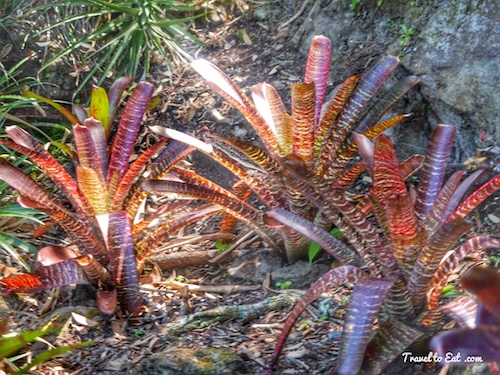
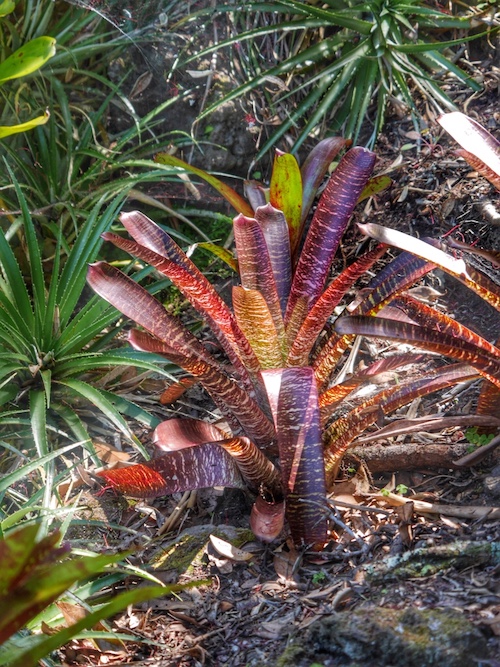
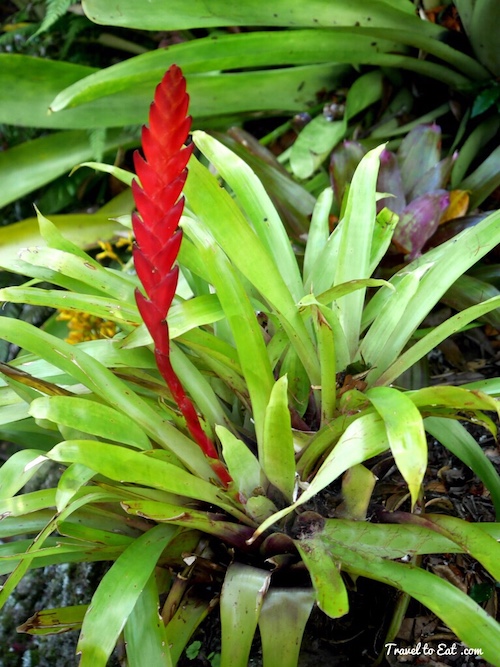
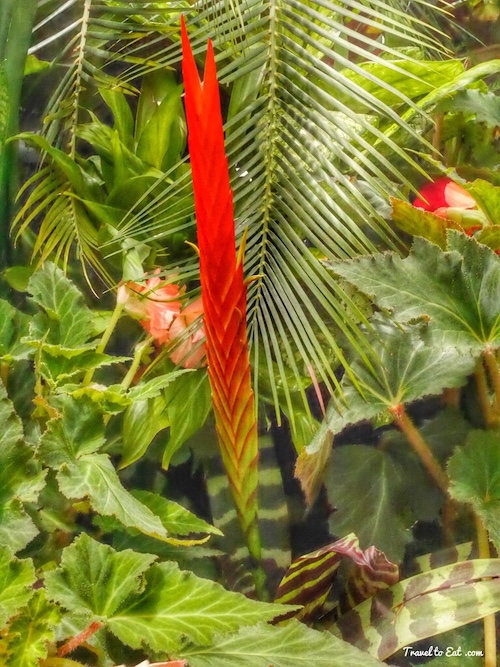
Vriesea splendons has green leaves, zebra-striped with brown; the bracts (modified or specialized leaf) are red and the flower yellow. If you examine the above photo, the central “sword” or bract is red and you can jut see the yellow flowers peeling away about half way up. Like most bromiliads, it flowers only once, then dies. After a time, you will see new plants appearing at the foot of the plant. They should be sectioned off with as much root as possible and repotted. This plant needs plenty of warmth and humidity, as well as considerable light, but never full sunshine, so the greenhouse in Wellington is the perfect location.
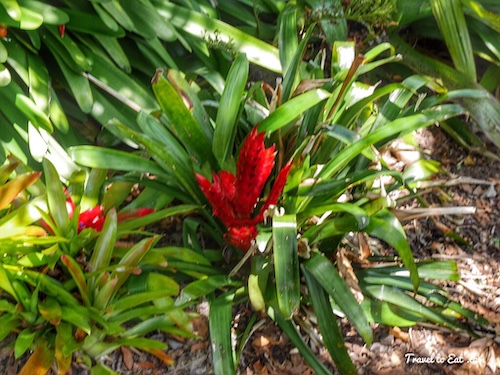
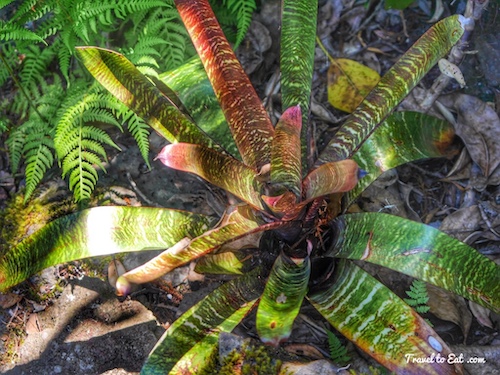
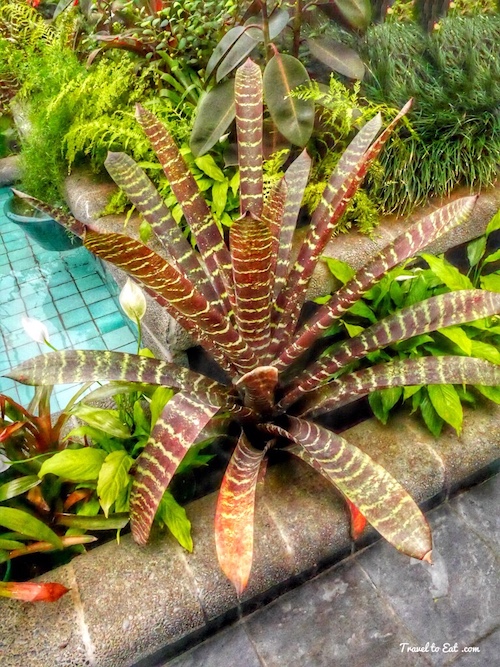
Vriesea is a genus of the botanical family Bromeliaceae, subfamily Tillandsioideae. The genus name is for Willem Hendrik de Vriese, Dutch botanist, physician (1806–1862). Its species are widespread over Mexico, Central America, South America and the West Indies. It develops green leaves with irregular dark cross banding and recurved tips – the leaf markings make it a decorative plant of great commercial value. It typically blooms in spring, branching yellow flowers on a tall branched spike. Vrieseas are a large group of bromeliads related to Alcantarea and Tillandsia. All are spineless plants and mostly small to medium sized specimens for the garden or potted collections. Vreseas push thier blooms proud of the foliage,bright colours of red orange pink and yellow will shine in even the darkest garden corner. Vriesea Kiwi Dusk looks sort of like this and was awarded first place in the foliage section of the New Zealand Bromiliad Society annual show in 2002.
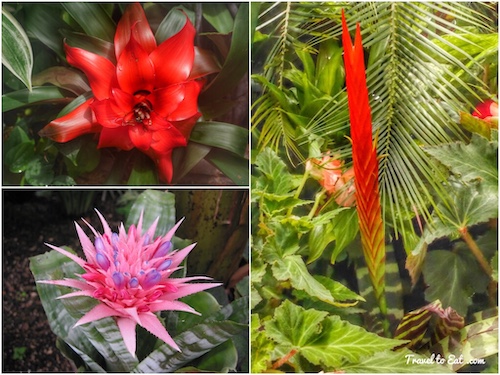
In 1776, the species Guzmania lingulata was introduced to Europe, causing a sensation among gardeners unfamiliar with such plants. In 1828, Aechmea fasciata was brought to Europe, followed by Vriesea splendens in 1840. These transplants were so successful, they are still among the most widely grown bromeliad varieties. As I have said above, I have really tried to get these names right but it is a complex subject. I plan to send this post to the New Zealand Bromeliad society for hep, I will update if they respond. In the meantime, Eden Garden is a great place to see Bromelia.
[mappress mapid=”122″]
References:
Alcanterea: http://www.bromeliads.co.nz/alcantarea.html
Bromeliad Society of New Zealand: http://www.bsnz.org/
Bromeliad Society of Australia: http://www.bromeliad.org.au/
Bromiliads Care: http://www.bromeliads.info/care-and-culture/
Types of Bromiliads: http://home.howstuffworks.com/types-of-bromeliads.htm
Daves Garden Bromiliads: http://davesgarden.com/guides/articles/view/1648/#b
Bromiliad Pictures: http://botu07.bio.uu.nl/tropical/?gal=brom
Bromiliad Pictures with Categories: http://www.bullisbrom.com/products.php?pid=62
Kiwi: http://www.kiwibromeliads.co.nz/collection_kiwi.htm
Subtropical: http://www.subtropical.co.nz/bromeliads_Green.html
Neoreglia Exotica Velvet: http://www.bromeliad.org.au/pictures/Neoregelia/ExoticaVelvet.htm
Fireball: http://almostedenplants.com/shopping/products/415-Fire-Ball-Bromeliad-Hawaiian-Volcano-Plant/
Neoregalia Fireball: http://www.bssf-miami.org/solving-the-fireball-mystery.htm

